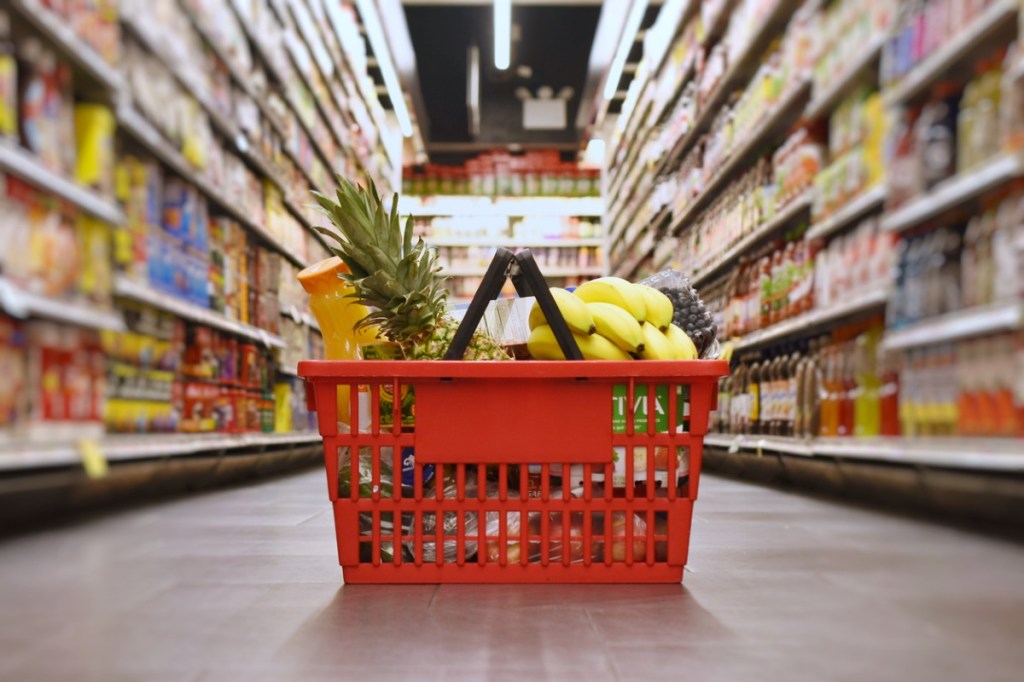Earlier this week, the Australian Association of Convenience Stores (AACS) held its mid-year webinar, which provided members with an update into the current state of the convenience market.

But to give the 300 registered attendees a deeper understanding of any changes to consumer behaviour and the state of the wider FMCG space, AACS invited Daniel Bone, Insights Director, IRI to present on what’s been happening within the grocery channel.
Bone highlighted that in recent years, Australian grocery has become better equipped at servicing the convenience needs of shoppers. This in turn has the potential of leading to repercussions for the performance within petrol and convenience (P&C) in terms of the migration of spend from one channel flowing into another.
Over the last 12 months, Australian retail trade performance has been robust, with spending growth on an annualised basis of 9.1 per cent, which Bone said is significantly more than the same time a year ago.
“Australians have spent an additional $13.6 billion in retail and that’s up from an incremental increase of $9.3 billion a year ago.
“What’s important to recognise is there’s plenty of competition for consumer’s wallets right now, and that we are actually spending relatively freely.”
He did however highlight that spend had softened in June and that it would continue to soften as we recognise the effects of lockdowns.
“What we can see by looking at Australian grocery sales over that time period, is that we had that phenomenal spike in sales in peak panic buying of March and April last year. But the hard lockdown that Victoria experienced around this time also contributed to some pretty significant double-digit growth increases in Australian grocery trade 12 months ago.
“What’s impressive is that we continue to record sales that are tracking above the pre-pandemic baseline,” he said.
“In the month of July, we have started to see that acceleration in sales again. But we’re not seeing the same level of frenzy buying that we were seeing at the beginning of the first multi-state lockdown in March and April of last year.
“We’re now seeing less fire in a frenzy panic buying, that really reflects three key things, and it’s important to acknowledge these things. One is that we’ve learned to respond. The fact that retailers and suppliers in the supply chain more generally are becoming better at ensuring that we have on shelf availability.
“You’re also seeing that out of home providers in the on-premise or foodservice cafes and QSR are now becoming more dense and better equipped at responding to consumers’ needs when mobility is reduced.”
Bone said that it is very important to look at those two-year comparisons to understand the core business performance metric for supermarkets.
“We can see that across the 52 weeks when you compare sales versus two years ago, we’re looking at growth of 13.2 per cent. If you isolate just to the last 26 weeks, ending 18 July this year, again, we’re looking at double-digit growth, slightly lower at 11.5 per cent.
“So, the industry is doing a good job of cycling last year’s trade highs and is considerably outperforming the level of sales that we’ve seen two years ago, and that’s not something that is unique.”
He highlighted that the United States and New Zealand are also both seeing robust double-digit growth in the case of food.
“One of the things that’s really key is the importance of mobility. When you see a reduction in mobility, you tend to see strong performance in the grocery trade. And that, of course, is all related to a huge spike in home consumption.
“There’s been a huge increase, in particular with breakfast and lunch occasions and home cleaning occasions, which has led to that increase in grocery performance. But reduced mobility has been really important.
“If we isolate Australian FMCG, and this time, we’re looking at a higher ratio of panel data, collected from over 13,000 Australian households, we can see that in the case of Australian grocery, e-commerce actually accounts for nearly half of the growth that we’ve recorded over the last 52 weeks. And that growth contribution is 10 times higher than the annualised sales contribution.
“We’ve recorded an additional 4.3 million e-commerce transactions in the last 26 weeks to mid-July. And that’s influenced by the fact that the grocers have recruited an additional 402,000 online buyers in that short time as well.
“Now what’s really important in this, is not just the fact that we’re bringing new consumers into e-commerce and that we’re generally doing a better job of retaining them now, it’s the fact that the omnichannel customer is a high spending buyer.”
Bone said that an e-commerce customer is likely to spend more than two times as much as an in-store customer.
It was announced earlier this week that Woolworths Metro has partnered with Uber Eats for one-hour delivery, and Bone pointed to this as a great example of the grocery trade becoming more adaptive. But he said Australia still has a lot of catching up to do when it comes to our e-commerce penetration, compared to countries like the US.
Bone then went on to talk about how we can draw on the data and experiences from our initial lockdowns in 2020 to make some predictions for the second half of 2021.
“We live in an era where what’s old is new again. And the situation with the current lockdowns, and that we’ve experienced 11 lockdowns in total in the financial year of 2021, we’ve now got over 50 per cent of us living in lockdown. There is a depressing sense of familiarity to the scenario and in looking back, we can actually anticipate things that are going to shape market outcomes in the grocery trade in the second half of this year.
“It’s important to take stock of just how significantly impacted the foodservice industry was in the last 12 to 18 months. If we look back around the time of lockdown number one, we saw a 50 per cent reduction in revenues coming through from cafes, restaurants, and takeaway food services.
“We did see a fairly strong recovery when mobility improved in 2021. And just in June, we’re starting to see that improvement taper off again. So, expect to see foodservice soften,” he said.
“Retail liquor was the fastest growth channel within Australia and FMCG over the last 12 months. And with lockdowns, we’re likely to see that migration of on-premise sales shift into retail liquor.”
Bone suggested that this presents an opportunity for convenience retailers when it comes to making sure that they are ranging a strong selection of mixers, to complement the growth of glass spirits in retail liquor.
“We ask Australian households how they do their shopping or how it’s been influenced because of COVID. This time last year, it was all about reducing trip complexity, and it was about the convenience of the location, in order to feel safe and secure in making the adventure out of home,” explained Bone.
And we’re seeing the same thing now, with Bone mentioning that Coles is showing double-digit growth in its neighbourhood stores versus a year ago, whereas their shopping centre stores are reducing, in some cases, by double-digits.
“Again, it’s a case of what’s old is new again, and we’re seeing signs of basket loading. Larger baskets are very much apparent in our panel in NSW in the last four weeks for which we have data available.
“And the level of increase that we’re seeing across Australian grocery overall, in the last four weeks is the largest average basket span that we’ve recorded in the last three years of data that I have visibility of.”
He explained that this is again down to mobility and shoppers choosing to make fewer trips into stores with larger basket sizes.
“We have that cautious expediency, which means that we are feeling a little more stressed when we go into the store. And we’re also trying to reduce the amount of time that we spend in-store. We are reducing dwell time at shelf; we’re spending less time looking for new product. We’re very focused and disciplined in terms of how we’re approaching that short mission.
“And it means that if you’re a supplier that’s thinking about NPD in grocery, it’s going to be a little challenging to capture their imagination,” he said.
“We know that cautionary mindset is going to be a boon to online sales, ABS data last year showed that getting home deliveries was one of the major precautions that Australians took as a result of COVID-19. Yes, it declined during this year, but we would expect it to lift off again in the second half.”
To end his presentation on an optimistic note, Bone emphasised that consumer confidence has not dipped to anywhere near the lows it saw at the beginning of the pandemic in 2020.
“I have three key call outs for supplier stakeholders across the grocery trade and for convenience stakeholders too. Firstly, you need to prepare for idiosyncratic demand. In the next half, we’re going to see big fluctuations in mobility, which are going to drive changes in the category demand. One of the big things we’re going to see in the tobacco trade in grocery and P&C is the fact that social smoking is now a lot lower. Because of that fact it’s going to restrict tobacco occasions and inhibit tobacco sales in both of those channels.
“We need to also think about different ways to get products to the consumer, and I mentioned Uber Eats partnering with Woolworths. It’s a great example of thinking of new ways to get products to the consumer.
“And most importantly, ensure you have a dedicated e commerce strategy. If you don’t have that you’re going to impede your ability to develop those multi-channel activations that really allow you to optimise your growth opportunity.
“Maintaining price discipline is hugely important in this environment. We know that shipping costs and commodity costs are going to lead to price increases over the next 12 months in this industry. The appetite to absorb those price increases among Australians is going to be pretty low, we need to be actively monitoring those elasticities and determining the impact on key targets.”
Source: IRI data to 18.07.21 (First three weeks of NSW lockdown)

